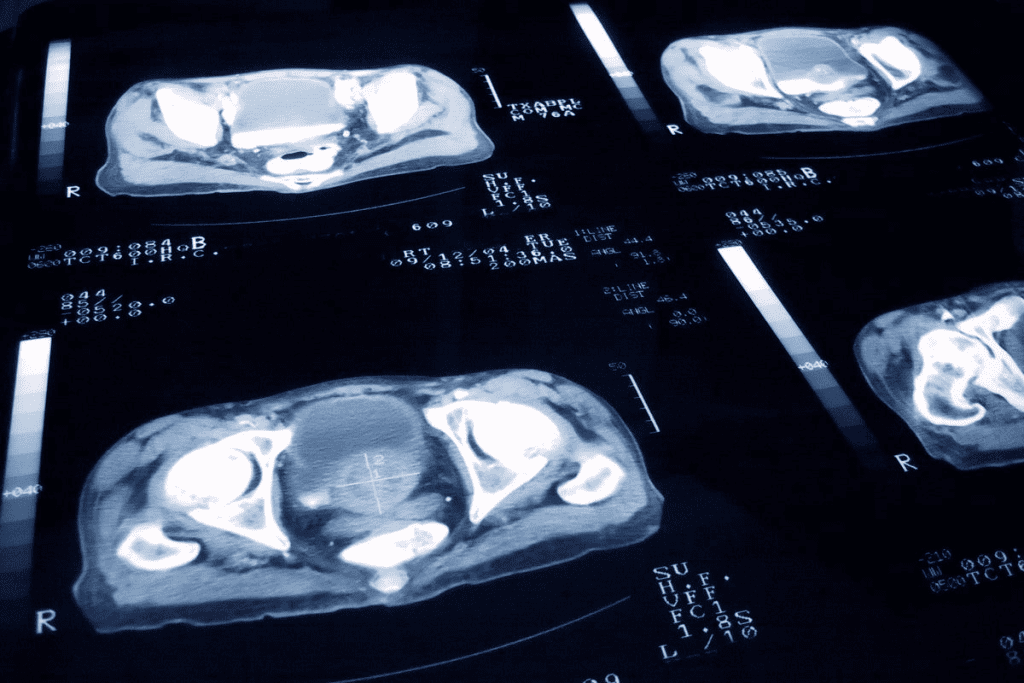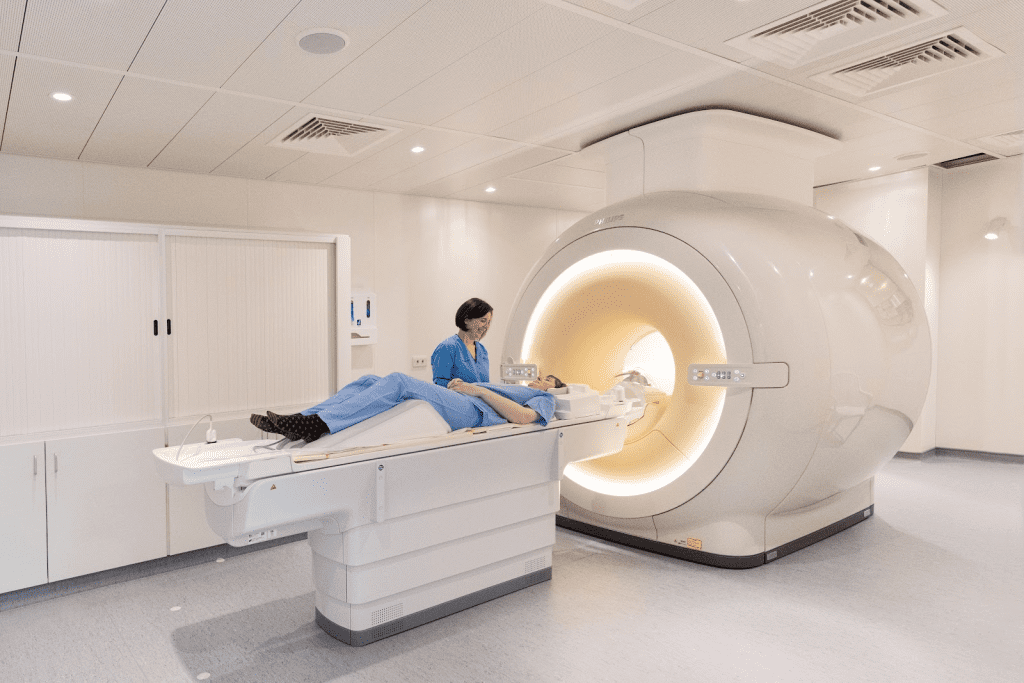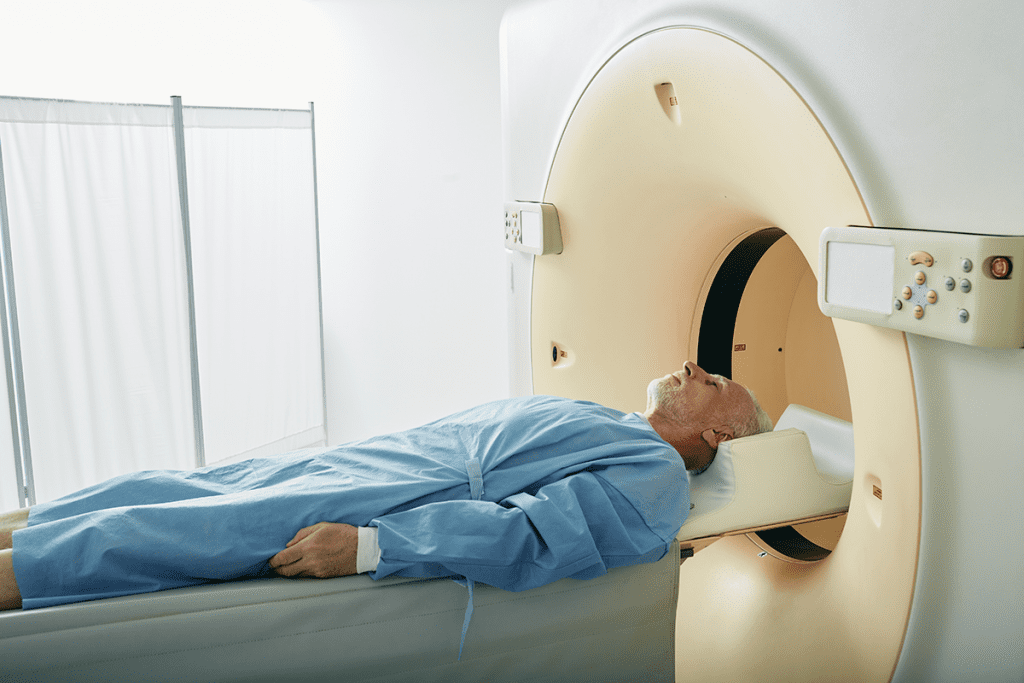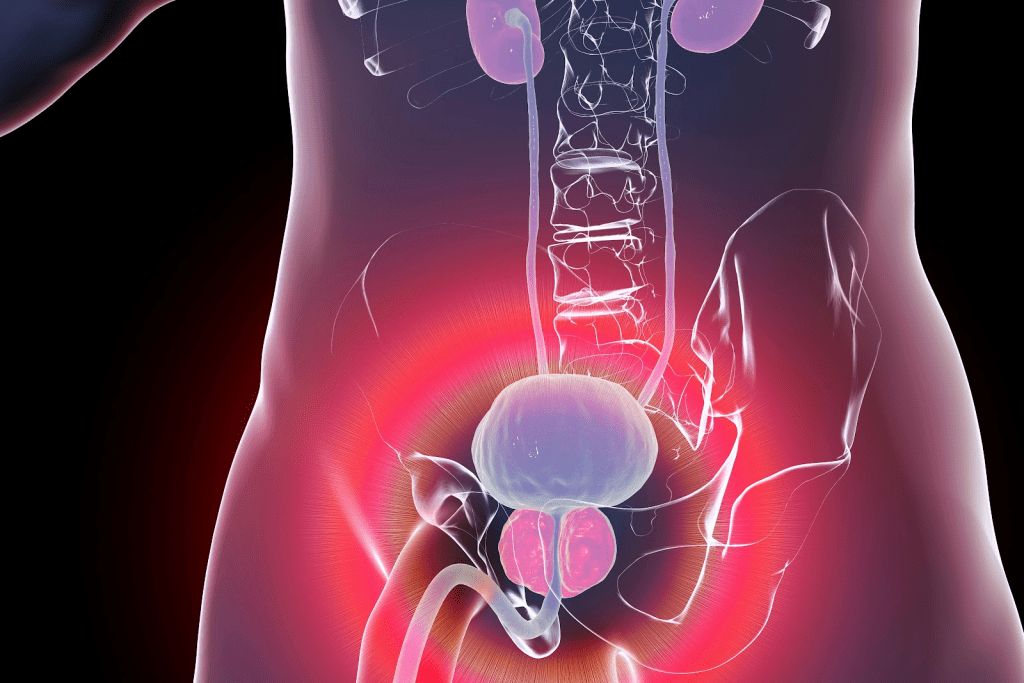Last Updated on November 25, 2025 by

Early detection of prostate cancer is key for effective treatment. We’re seeing a big change in how we diagnose it. Advanced MRI technology is playing a big role. Prostate MRI is vital in many cases. Discover when you need a prostate MRI for the best results.
A prostate MRI is often suggested for men with high PSA levels or odd digital rectal exams. This tool helps doctors figure out how much cancer is there. It also helps them plan the best treatment.
At Liv Hospital, we use MRI to give accurate diagnoses and care that’s just right for each patient. Our team is all about delivering top-notch healthcare with kindness and understanding.
The prostate MRI is a top-notch tool for spotting cancer in the prostate gland. It gives clear images that help doctors find and understand cancer better. This tool has made managing prostate cancer more precise by showing the prostate’s details.
On an MRI, the prostate gland shows up clearly as a separate organ. It has different brightness levels that help doctors tell it apart from other tissues. The multi-parametric MRI (mpMRI) method combines several MRI scans. This gives doctors detailed pictures to spot problems like tumors and see how big they are.

Yes, MRI can find cancers that other tests might not catch. Multi-parametric MRI (mpMRI) is better at finding prostate cancer and cuts down on unnecessary biopsies by up to 28%. MRI’s sharpness lets it spot tumors that other methods can’t see.
The prostate MRI procedure: What to expect
During a prostate MRI, you’ll lie very quietly inside the MRI machine. It uses strong magnetic fields to make detailed pictures of your prostate. Here’s what usually happens:
Knowing what to expect can make you feel less nervous and help you have a better experience during your prostate MRI.
A rise in PSA levels often leads to further tests, like a prostate MRI. These levels can signal cancer risk or benign conditions. MRI helps decide if a biopsy is needed, leading to a more precise diagnosis.
Guidelines from oncology and radiology now push for MRI before biopsies. This is true for men with negative biopsies or those on active surveillance. It helps pinpoint who really needs a biopsy, cutting down on unneeded tests.
The PSA level that prompts an MRI varies by patient and guidelines. A PSA over 4 ng/mL is often seen as high and may lead to more tests. Yet, the choice for an MRI depends on several factors, like PSA velocity and density, and other signs.
We look at a PSA over 4 ng/mL as a possible MRI trigger. But we also consider family history, age, and past biopsy results. This detailed look helps us decide if more tests are needed.

MRI greatly cuts down on unneeded biopsies by giving clearer diagnostic info. It helps spot significant cancer while avoiding unnecessary tests in low-risk cases.
Research shows MRI can cut unneeded biopsies by up to 28%. It does this by better finding significant cancer and avoiding tests for low-risk disease. This leads to more focused and effective care for our patients.
In summary, high PSA levels are a key reason for a prostate MRI. Knowing when to recommend an MRI and its benefits in avoiding unneeded biopsies helps us give better care for prostate cancer.
Doctors often suggest a prostate MRI after finding something unusual during a digital rectal exam. This exam is key for checking the prostate gland for any problems.
A healthcare provider uses a gloved finger to feel the prostate gland during a DRE. They look for lumps, hardness, or if it’s not symmetrical. The goal is to find any signs of prostate cancer or other issues. They also check the size and how tender it is.

A medical expert says, “A digital rectal exam is a simple yet effective way to detect prostate abnormalities. If the exam reveals suspicious findings, further investigation is warranted.”
If a DRE shows something odd, a prostate MRI is usually suggested next. MRI gives a detailed view of the prostate gland. It helps find cancer and how big it is. This info is key for choosing the right treatment.
Studies show MRI helps find important prostate cancer and cuts down on unnecessary biopsies. Using MRI after a DRE helps doctors diagnose and plan treatment better.
In short, an abnormal digital rectal exam means it’s time for a prostate MRI. Knowing how to spot prostate issues during a DRE and why MRI is next helps patients understand their health journey.
Persistent suspicion of prostate cancer after negative biopsies is a big challenge. In such cases, MRI plays a key role in further investigation and accurate diagnosis.
Standard biopsy techniques are valuable but have limits. They might not catch cancer, like if it’s in hard-to-reach spots or is small. This can lead to false-negative results, where cancer is missed during the biopsy.
The American Urological Association points out a big challenge. Traditional biopsies often can’t target suspicious areas well, missing cancerous tissues.
MRI greatly improves prostate cancer diagnosis accuracy. It gives detailed images of the prostate gland. This helps spot areas that might have been missed by standard biopsies.
Using MRI in prostate cancer diagnosis boosts detection rates, mainly for significant cancers. It helps in staging intermediate or high-risk prostate cancers. It also guides treatment decisions and watches for cancer return.
With MRI technology, healthcare providers can give more precise and personalized care. This is true even when initial biopsies show no cancer.
Getting ready for a prostate MRI is important. We’ll help you understand what to do before it. This way, the MRI will go smoothly and give accurate results.
The night before, you might need to eat only liquids. This helps your bowels be clear for the MRI. Always follow what your healthcare provider or radiology department tells you.
Some might ask you to take a bowel prep medication. It’s key to follow these instructions well. This ensures your bowel is ready for the MRI.
Whether to poop before a prostate exam or MRI depends on your doctor’s advice. Some might suggest an enema to empty your bowel. An empty bowel can make MRI images clearer and more accurate.
If you need an enema, do it as instructed. This will help make your prostate MRI a success.
Usually, you can eat before an MRI unless your doctor says not to. It’s best to have a light meal or a liquid diet as suggested. Avoid eating a big meal before the MRI to avoid discomfort.
Always follow the diet advice from your healthcare provider or radiology department. If you’re unsure, ask them for help.
Prostate MRI is key in modern cancer care, helping diagnose and treat prostate cancer. At Liv Hospital, we follow the latest academic protocols. We also provide care that meets international standards.
The use of prostate MRI in cancer care is changing fast. It has made diagnosing better, cutting down on unnecessary biopsies by up to 28%. This technology helps doctors give top-notch care to patients with prostate cancer.
Some might worry if MRI can cause cancer. But studies show MRI is safe, without radiation risks. We keep learning and using MRI to better care for our patients.
Looking ahead, prostate MRI’s role in cancer care will grow even more. By using the newest tech, we aim to improve how we diagnose and treat. This will help us give better care to patients all over the world.
A prostate MRI helps diagnose and stage prostate cancer. It also guides treatment decisions. It shows detailed images of the prostate gland and surrounding tissues.
Yes, MRI can find cancer that other tests might miss. It’s great for spotting tumors not seen on ultrasound or other tests.
On MRI, the prostate gland looks like a distinct organ. It shows different signal intensities. Doctors can spot abnormalities like tumors or inflammation.
The PSA level that leads to an MRI varies. It’s often recommended when PSA levels are high, above 4-10 ng/mL.
MRI helps avoid unnecessary biopsies by giving accurate cancer info. This helps doctors choose targeted biopsies instead of invasive procedures.
The night before an MRI, follow your healthcare provider’s instructions. This might include dietary restrictions or bowel prep.
It’s best to have a bowel movement before a prostate exam or MRI. But, your healthcare provider might give different instructions.
Usually, you can eat before an MRI. But always follow your healthcare provider’s specific instructions. Some MRI procedures might require fasting or dietary restrictions.
Yes, MRI can find cancer, including prostate cancer. It’s a key tool for diagnosing and staging cancer, and guiding treatment.
During a digital rectal exam (DRE), a healthcare provider can feel for prostate abnormalities. They look for any irregularities in the prostate gland.
MRI is recommended after an abnormal DRE. It helps evaluate the prostate gland and surrounding tissues. It guides treatment decisions.
No, an MRI does not cause cancer. It uses a magnetic field and radio waves to create images. It doesn’t use ionizing radiation, which is a cancer risk factor.
American Cancer Society. (2023). Prostate Cancer Early Detection and Diagnosis. Retrieved from https://www.cancer.org/cancer/prostate-cancer/detection-diagnosis-staging/tests.html
Subscribe to our e-newsletter to stay informed about the latest innovations in the world of health and exclusive offers!